Subbotniki in Sevan, Armenia Updated February 2024
About 2000 an American-Armenian student at the University of Georgetown, Vartan Akchyan, wrote his master's thesis about Jews in Armenia, including Subbotniki, got a grant to make a documentary video in Armenia, which won an international award, then published a summary article. He is still working at Georgetown. The thesis, video and article are all titled: Jews in Armenia: The Hidden Diaspora. CNDLS STAFF Center for New Designs in Learning and Scholarship Vartan Akchyan, M.A. Educational Media Production Specialist https://cndls.georgetown.edu/people/ Learning Management System https://contact.georgetown.edu//view/akchyanv/# Assistant Director, LMS Administrator University Information Services (UIS) Segment from video: Jews in Armenia: The Hidden Diaspora, a film by Vartan Akchyan 2002, DVD/video, 25+ minutes, $46 — Russian, Hebrew, Armenian, and English with subtitles in English. Based on his thesis of the same title about the history and existence of the Jewish communities in Armenia. Made in the summer of 2001 in Armenia, Israel, and the US. Nominee for "Best Documentary" at the 2002 AFFMA International Film Festival, September 27-29, Raleigh Studios, Hollywood, CA. Archived web pages from 2002: Home — About the Film — Credits — News The film was shown
"Jews in Armenia: The Hidden Diaspora". Chapter 5 of the video, titled: "Modern Communities", is 3.5 minutes about the Subbotniki (9:23 to 12:51 min.). Below is a storyboard of Chapter 5 showing the English subtitles. For more details, download his published thesis (PDF): Jews in Armenia: The Hidden Diaspora, Georgetown Journal of International Affairs, Culture & Society, Winter/Spring 2003. The Subbonik information is on pages 81-86. CLICK on PICTURES to ENLARGE
|
|||
Jews in Armenia: The Hidden Diaspora |
|||
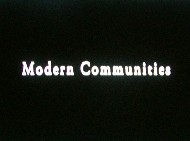 |
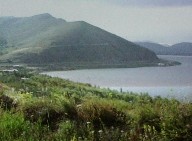 [Panorama of Lake Sevan with singing] |
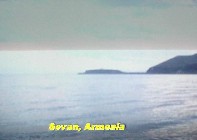 Sevan, Armenia |
|

|
|||
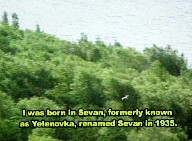 I was born in Sevan, formerly known as Yelenovka, renamed Sevan in 1935. |
 We have been living here until now. |
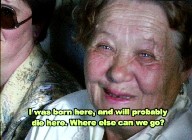 I was born here, and will probably die here. Where else can we go? |
|
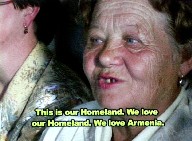 This is our Homeland. We love our Homeland. We love Armenia. |
 Subboniks are Armenian citizens whose religion is Judaism. They observe the Sabbath. |
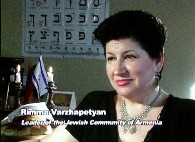 Rimma Warzhapetyan, Leader of the Jewish Community of Armenia |
|
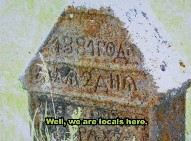 Well, we are locals here. |
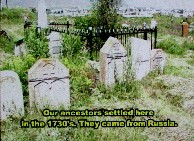 Our ancesters settled here in the 1730s. They came from Russia. |
 They were Russians who renounced Christianity.... |
|
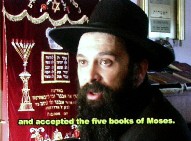 ...and accepted the five books of Moses. |
 When the split of Christianity [raskol] took place our ancestors broke away. |
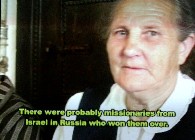 There were probably missionaries from Israel in Russia who won them over. |
|
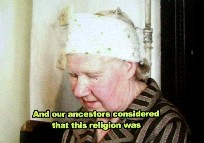 And our ancestors considered that his religion was... |
 ...the truest of all the religions hat existed in the world. |
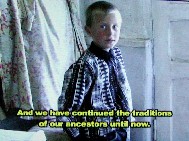 And we have continued the traditions of our ancestors until now. |
|
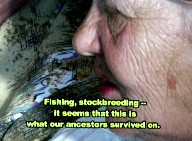 Fishing, stockbreeding -- it seems that this is what our ancestors survived on. |
 The fish was very good. The trout was big then, very tasty. |
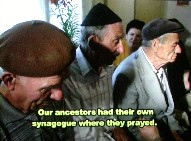 Our ancestors had their own synagogue where they prayed. |
|
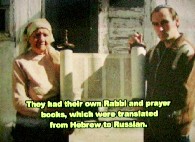 They had their own Rabbi and prayer books, which were translated from Hebrew to Russian. |
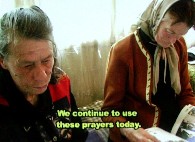 We continue to use these prayers today. |
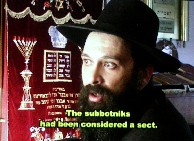 The subbotniks had been considered a sect. |
|
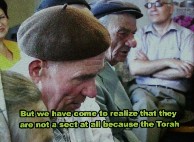 But we have come to realize that they are not a sect at all because the Torah ... |
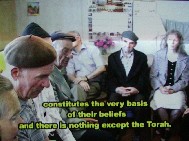 ...constitues the very basis of their beliefs and there is nothing except the Torah. |
 We gather on Saturdays, pray to our God, sing, talk... |
|
 ..discuss things and then return to our homes. |
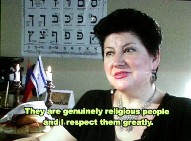 They are genuinely religious people and I respect them greatly. |
 [Return to views of Lake Sevan with singing] |
|
 |
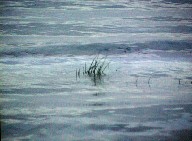 |
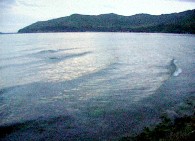 |
|
|
|||
Back to The Last of the Saturday People
Back to Subbotniki.net